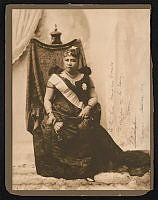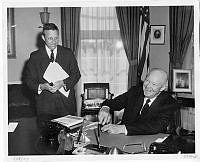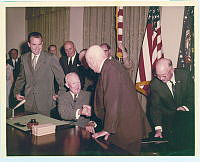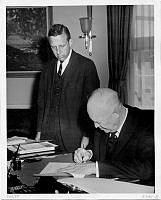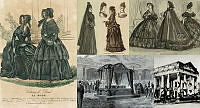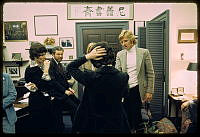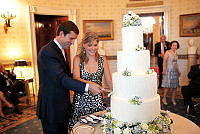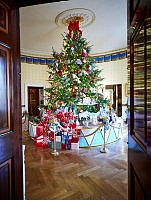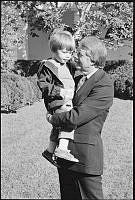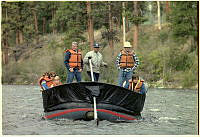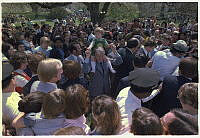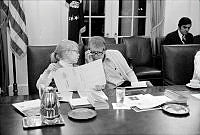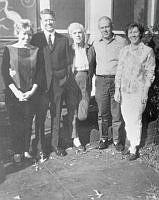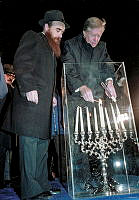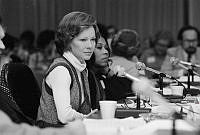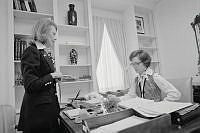White House Decorative Arts in the 1910s
Copyright © White House Historical Association. All rights reserved under international copyright conventions. No part of this article may be reproduced or utilized in any form or by any means, electronic or mechanical, including photocopying, recording, or by any information storage and retrieval system, without permission in writing from the publisher. Requests for reprint permissions should be addressed to books@whha.org
When President and Mrs. William H. Taft came to the White House in 1909, they didn’t change the furnishings in any of the state rooms. The first lady replaced the Victorian furniture in the president’s bedroom with Colonial Revival mahogany pieces and personal furnishings. The Taft's twenty-fifth anniversary was the major social event of their administration and among the many silver gifts they received was a Lenox tea service with silver overlay engraved "T" and "1886-1911."
Woodrow Wilson and his family entered the White House in 1913. First Lady Ellen Wilson, a strong supporter of mountain craftswomen, selected their textiles to decorate the second floor. She also redesigned the East and West gardens and purchased naturalistic limestone furniture for them. Ellen Wilson died in 1914 and in the following year President Wilson courted and married Edith Bolling Galt. The new first lady replaced many of the wall coverings, draperies and upholstery in the state floor rooms. Her lasting contribution was the establishment of the China Room in 1917 to display presidential tableware. The Wilsons also ordered the first American-made state service, a 1,700 piece made in Trenton, New Jersey by Lenox.

Tea and Coffee Set. Lenox, Inc., Trenton, New Jersey, 1911. This service, with silver overlay engravings, was among the gifts the Tafts received on their twenty-fifth wedding anniversary in 1911.













